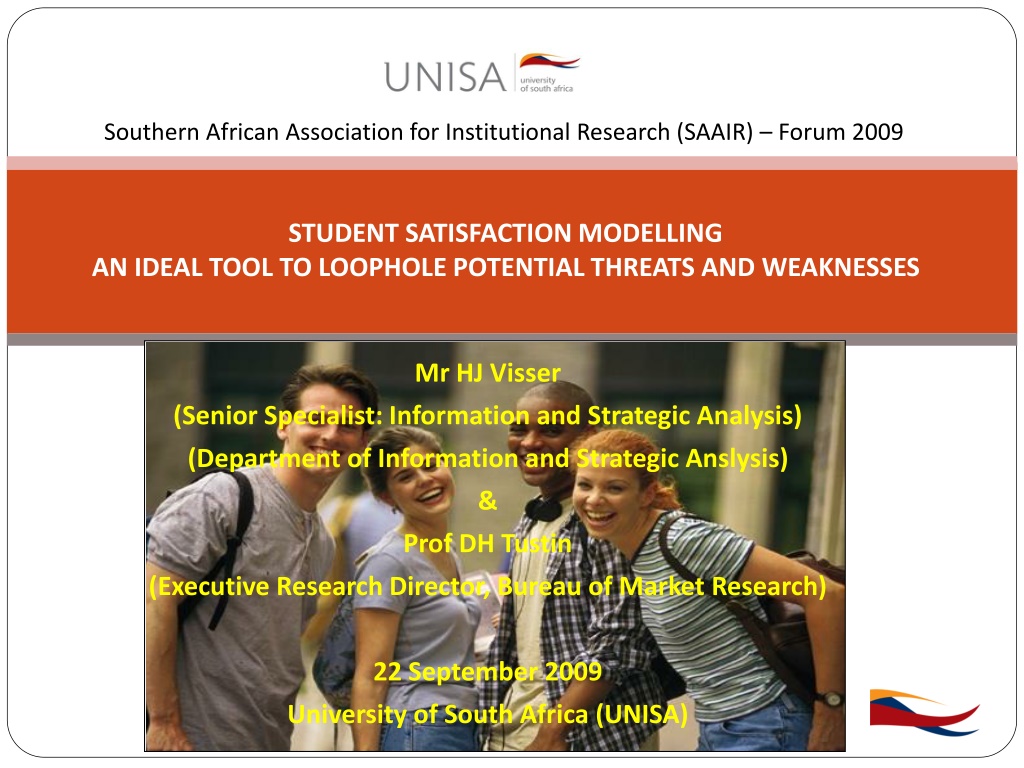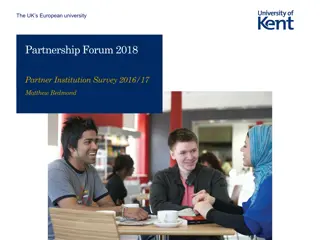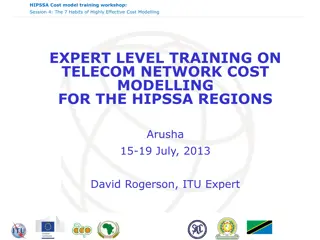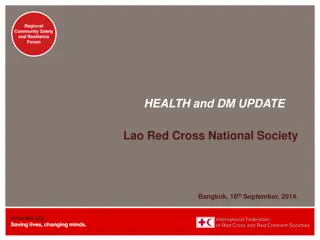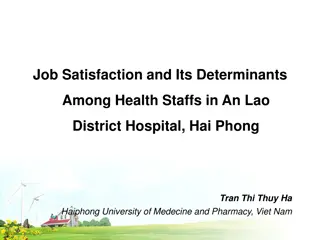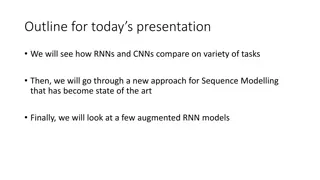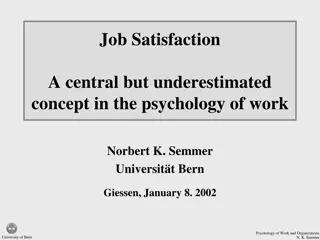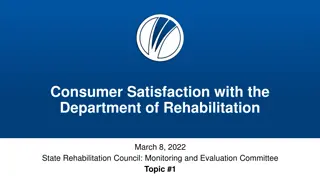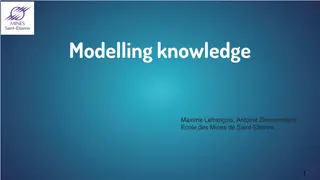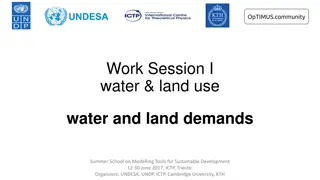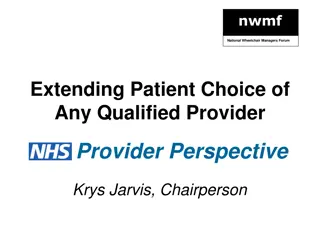Exploring Student Satisfaction Modelling at SAAIR Forum 2009
Delve into the research presented at the Southern African Association for Institutional Research (SAAIR) Forum in 2009, focusing on student satisfaction modelling to identify potential threats and weaknesses. The study emphasizes challenges, research methodology, student registration, and hypotheses related to factors influencing student satisfaction levels across various demographics.
Download Presentation

Please find below an Image/Link to download the presentation.
The content on the website is provided AS IS for your information and personal use only. It may not be sold, licensed, or shared on other websites without obtaining consent from the author. Download presentation by click this link. If you encounter any issues during the download, it is possible that the publisher has removed the file from their server.
E N D
Presentation Transcript
Southern African Association for Institutional Research (SAAIR) Forum 2009 STUDENT SATISFACTION MODELLING AN IDEAL TOOL TO LOOPHOLE POTENTIAL THREATS AND WEAKNESSES Mr HJ Visser (Senior Specialist: Information and Strategic Analysis) (Department of Information and Strategic Anslysis) & Prof DH Tustin (Executive Research Director, Bureau of Market Research) 22 September 2009 University of South Africa (UNISA)
PrologueStudent Satisfaction Surveys Challenges Stronger customer-oriented philosophy Ensure student readiness Develop retention strategies Vigilant management approach: satisfaction-intention-retention link CHE - 56 % of South African students drop out NCES - 58 % of students are likely to complete qualification 3 million young South Africans between 18 and 24 years of age are neither in employment, education or training 2
Research methodology Meta-analysis Research results of previous student satisfaction studies were combined with selected Student Information System (SIS) data 5 823 student data records Descriptive analysis Mean satisfaction index scores Multivariate analysis Correlation analysis (Bivariate) ANOVA-test Examines internalfactors impacting on students satisfaction across the various pre-defined engagement areas and student biographics Investigates external factors that impact on student success across the various pre-defined student biographics 3
Student registration Student support Academic services/ Administrative products 4
Hypotheses Successful students are more satisfied with services than unsuccessful students Successful students satisfaction levels differ by gender group Successful students satisfaction levels differ by population group Successful students satisfaction levels differ by age group Successful students satisfaction levels differ by guardian qualification level Successful students satisfaction levels differ by employment status Successful students satisfaction levels differ by geographic location Successful students satisfaction levels differ by entrance category Successful students satisfaction levels differ by IT skills category 5
SATISFACTION SCORES OF SUCCESSFUL AND UNSUCCESSFUL STUDENTS Unsuccessful students Successful students Total Dimension Index Index Index 74 74 74 Registration 65 64 65 Student Support 71 69 70 Admin and Professional 70 70 70 Academic 71 70 70 Average 6
BIVARIATE CORRELATION ACROSS ENGAGEMENT AREAS Dimensions Registration Student support Administration and professional Academic Total Registration 1.000 0.631 0.627 0.606 0.828 Student support 0.631 1.000 0.552 0.614 0.792 Administration 0.627 0.552 1.000 0.591 0.775 Academic 0.606 0.614 0.591 1.000 0.890 Total 0.828 0.792 0.775 0.890 1.000 How strong do student success and satisfaction correlate across a selection of biographic variables and how significant is such correlation? 7
BIVARIATE CORRELATION ANALYSIS Variable Correlation Sig Gender Male - -0.039 0.060 Female - -0.006 0.710 Population African + 0.012 0.492 Coloured - -0.037 0.538 Indian (Asian) + 0.037 0.426 0 White + 0.032 0.241 Age 15-23 years - -0.041 0.118 24-30 years - -0.046 0.077 31-38 years - -0.041 0.125 39+ years + 0.008 0.756 8
Employment Correlation Sig Full-time - -0.033 0.875 Part-time - 0.064 0.111 Unemployed - -0.020 0.533 Full-time student - -0.084 0.204 Geographic area Towns - -0.004 0.884 Metro/city - -0.030 0.085 0 Entrance category Previous ODL -0.007 0.650 Previous residential - -0.021 0.502 No previous experience - -0.064 0.226 IT literacy Less IT literate - -0.004 0.852 More IT literate -0.031 0.063 Overall - -0.024 0.069 9
STATISTICAL SIGNIFICANT DIFFERENCES IN SATISFACTION RATINGS Administration services Index Registration Index Student Support Index Academic Average Index Biographic variable Gender Male Female Total Population group African Coloured Indian White Total Age group 15-23 24-30 31-38 39-77 Total Index 75 73 74 64 64 64 71 69 69 71 70 70 71 70 70 77 69 69 69 74 67 59 57 61 64 74 65 62 64 69 73 66 66 68 70 73 65 65 67 70 72 73 74 76 74 63 63 64 66 64 69 69 70 70 69 68 68 71 73 70 68 69 71 73 70 10 Statistically significant at a 95% level of confidence
Administration services Index Registration Index Student Support Index Academic Average Index Biographic variable Male guardian qualification Degree Diploma/certificate Grade 1 - 12 & ABET No qualification Total Male guardian qualification Degree Diploma/certificate Grade 1 - 12 & ABET No qualification Total Employment category Employed full-time Employed part-time Unemployed Full-time student Total Index 69 72 73 79 73 60 64 62 68 63 65 67 69 75 69 68 70 69 74 70 66 69 69 75 70 68 70 73 78 73 61 62 63 68 64 64 66 69 74 69 66 69 70 73 70 66 68 70 74 70 73 71 76 73 74 64 61 65 65 64 69 67 72 73 69 70 69 72 70 70 70 68 72 71 70 11 Statistically significant at a 95% level of confidence
Administration services Registration Student Support Academic Average Geographic area Towns Metro/city Total Entrance category Previously ODL No previous university Previously residential Total IT literacy levels More advanced IT skills Less advanced IT skills Total Student success Unsuccessful students Successful students Total 77 72 74 66 63 64 73 68 69 73 69 70 73 69 70 73 75 72 74 63 68 66 64 68 73 72 69 70 75 69 70 70 73 71 70 71 75 74 62 65 64 67 71 69 69 71 70 68 71 70 74 74 74 65 64 65 71 69 70 70 70 70 71 70 70 12 Statistically significant at a 95% level of confidence
Hypotheses Research dimension Student success Accepted Gender group Accepted Population group Rejected Age group Rejected Guardian qualification level Rejected Employment status Rejected Geographic location Rejected Entrance category Rejected IT literacy Rejected 13
MOST AND LEAST SATISFIED STUDENT GROUPS Biographic variable Most satisfied Least satisfied Gender Males Females Population African Asian (Indian) Age Older students Younger students Guardian qualification No qualification Degree qualification Employment Unemployed Part-time students Geographic Towns Metro/city Entrance category No previous higher education experience Previous ODL students 14
External factors Work related (ie stress at work, relevancy of study to workplace) Financial and nonfinancial support and guidance Home environment (ie stress from family and household) Social life (ie sports/spiritual events) Study environment (ie access to library, study space and support) Workload and length of study (ie hours required for studies, period of completion of studies) 15
External factors Biographic variable Least satisfied Inhibiting factors (Priority ranking) Gender Females Work stress, Family stress Finance Population Asian (Indian) Work stress, Family stress Age Younger students Finance , Work stress Lack of support/guidance Guardian qualification Degree qualification Work stress, Family stress Employment Part-time students Finance, Work stress Geographic Metro/city Work stress, Finance Enrolment status Part-time younger students Work stress, Finance Entrance category Residential university Work stress student Lack access to library Family stress 16
CONCLUSION STUDENT SATISFACTION MODELLING AN IDEAL TOOL TO LOOPHOLE POTENTIAL THREATS AND WEAKNESSES 17
